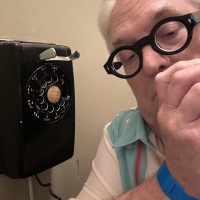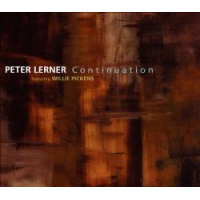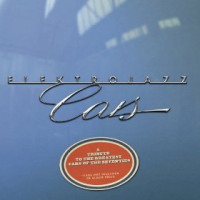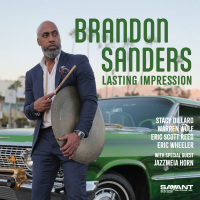Home » Jazz Articles » Book Review » Straight Life – The Story of Art Pepper by Art and Laurie Pepper
Straight Life – The Story of Art Pepper by Art and Laurie Pepper
 Straight Life—The Story of Art Pepper
Straight Life—The Story of Art Pepper Art and Laurie Pepper
506 Pages
ISBN# 0306805588
Da Capo Press
1996
Writer's Note: Straight Life—The Story of Art Pepper is 35-years old and is a well-established piece of jazz reportage not requiring further comment, which has never stopped me. I have written this piece for a two-fold reason: one, to provide All About Jazz some commentary original to the magazine, and to anticipate Laurie Pepper's long awaited memoir, ART: Why I Stuck with a Junkie Jazzman (Art Pepper Music Corporation, 2014). These two books taken together provide a glimpse into jazz making in the latter half of the 20th Century, when it most rapidly evolved and how two desperate souls found one another and created something beautiful and forever.
Jazz autobiographies, like all autobiographies, are funny animals. Ostensibly, an autobiography could be expected to be an open and honest account of its subject's life: an objective appraisal. Okay, that is a bit pie-in- the-sky. But, all too often, autobiographies come off glib, aloof, and historically uninformative as Miles Davis did in Miles: The Autobiography (Simon & Schuster, 1989, with Quincy Troupe) or candidly evident that the author is revealing only what he or she wants the reader to know as in Eddie Condon's We Called it Music (H. Holt, 1947, with Thomas Sugrue). Both are certainly entertaining and reveal much of their authors' personality and temperament: more in the vein of memoir than true biography. That said, both, in equal measure, fail to provide the academic rigor of the classical biography. Perhaps they were never supposed to.
Art and Laurie Pepper's Straight Life—The Story of Art Pepper exists as a classic biography within an autobiography, wrapped in a memoir. Published originally in 1979 and then again in 1994 with a new afterword, updating the alto saxophonist's story from 1979 until his death in 1982, Straight Life remains the touchstone of the post-bebop West Coast jazz life. Within is the open and honest account of the jazz life: the only American Romantic myth that can compare with its European equivalent, Goethe's Die Leiden des jungen Werthers, the myth of beautiful and talent youth damned to self-destruction.
Laurie Pepper, then Laurie Miller, had met Pepper in 1968 while they were living at Synanon, a quasi- predecessor to what would become "rehab," chemical dependency treatment centers 15- years later. Synanon utilized the "honesty at all cost" rehab maxim without the 12- Step dogma. It was founded in 1958 by Charles E. "Chuck" Dederich, Sr. and boasted treatment successes in the face of conventional wisdom. Like many social movements (read that, "cults"), Synanon transmogrified into the Church of Synanon in the 1970s, and like many such organizations, permanently disbanding in 1989 in the shadow of alleged criminal activities, including attempted murder and Federal tax-evasion accusations.
It was during this period that Laurie Miller began a relationship with Pepper, with both leaving Synanon, seeking vocations outside of treatment. After having spent much time with Pepper, a master storyteller, Miller posited the idea of writing Pepper's story and in 1972 when her initial interviews with the saxophonist began. The two married in 1974 and after some fits and starts, the book was written. What resulted was a story assembled using interviews to flesh out Pepper's pre-Synanon life and Miller's being an active participant in the story after. In equal measures, Pepper's story exists as a grinding and lurid story of West Coast class distinctions, poverty and neglect out of which a singular talent emerged and finally prevailed. Pepper narrates with the flair of an exhibitionist, detailing his sexual coming of age, two failed marriages, his introduction to heroin and his multiple incarcerations, which make for many of the most gripping passages in the book.
Straight Life exists as a collection of books, a jazz bible, where many elements are given in- depth treatments. These often disparate elements include music and race on Los Angeles' Central Avenue in the 1940s, traveling with a big band (Stan Kenton) after World War II and then the small-group recordings that grew out of the East Coast Bebop movement as it moved West. Institutional life in San Quentin is provided in lurid detail, with Pepper detailing the measures required to live in prison, as well as, the stories of crime and larceny that existed between incarcerations. The Synanon sections illuminate the structures and conduct of the cult, which were well ahead of their time.
Necessarily, what is central to the book is the music. In the 1950s, Pepper recorded classic and near- classic LPs of the period, most notably Meets the Rhythm Section (Contemporary, 1957), made in a heroin fog brilliantly described in the book and Art Pepper + Eleven: Modern Jazz Classics (Contemporary, 1959). The album art of these LPs depicts a physically beautiful man, intense and smoldering. The music reveals an alto saxophonist and clarinetist with an empathic knack for ballads and burners, a knack that would transform into a battlefield in the latter part of Pepper's career.
In the recording chronology, after Pepper had recorded the sides which would become Intensity (Contemporary, 1960) on November 23- 25, 1960, it would be 15 years before Pepper would record again as a leader. The intervening time was occupied by prison, Synanon, and scuffling around before the now Laurie Pepper became more involved, guiding Pepper and his career back to music. In 1975, Living Legend (Contemporary) was recorded and a very different Pepper emerged, one that stood at stark contrast to the dry-ice cool of the late 1950s. An aural example of this is the comparison of Pepper's 1956 recording of "Blues In" from Modern Art (Blue Note, 1956) with its Paul Desmond-like tone made dirty with olive brine and Samba Mom Mom from Living Legend with its warm and searching timbre becoming molten in the solo sections. Pepper evolved through a 1960s John Coltrane phase into an incendiary performer out to prove himself anew each time he played.
Pepper's tours of the East Coast, ending in The Complete Village Vanguard Sessions (Contemporary, 1977/1995) and then his tours of Japan and subsequent recordings on Galaxy Records round out the original book. Laurie Pepper, in her 1994 afterword, bring the reader to Pepper's end from a cerebral hemorrhage June 15, 1982 at the age of 56 years old. Laurie Pepper's part in the story increases in prominence as Pepper's reliance on her increases in the chronology and this is reflected in the writing without Laurie Pepper, in the role of editor, losing site of the story's subject. The picture of Art Pepper that takes shape is one of a brilliant artist with an ill-defined ego and superego, leaving only a dense limbic id doing its bidding. Laurie Pepper never sugarcoats her challenges with the artist but nor does she judge him as anything other than a sublime artist with all of the evidence to support that claim.
Writer and Pepper historian Todd Selbert, author of The Art Pepper Companion: Writings on a Jazz Original (Cooper Square Press, 2000) provides an at-the- time exhaustive discography which he updates for the 1994 edition. Many recordings have been compiled and re-released quickly outstripping Seibert's original stellar account. The reader is encouraged to see the Art Pepper Discography at Jazz Discography Project.
If Straight Life lacks anything, it is a clearer picture of Laurie Pepper, who is Oz behind the curtain in this story. But then that was never her intention to be anything else. That said, Ms. Pepper rectifies this circumstance with the publication of her personal memoir ART: Why I Stuck with a Junkie Jazzman, revealing a complex personage who is at once warmly engaged and frankly spoken.
Tags
Art Pepper
Book Reviews
C. Michael Bailey
Terri Hinte
United States
Miles Davis
Eddie Condon
Paul Desmond
John Coltrane
PREVIOUS / NEXT
Support All About Jazz
 All About Jazz has been a pillar of jazz since 1995, championing it as an art form and, more importantly, supporting the musicians who make it. Our enduring commitment has made "AAJ" one of the most culturally important websites of its kind, read by hundreds of thousands of fans, musicians and industry figures every month.
All About Jazz has been a pillar of jazz since 1995, championing it as an art form and, more importantly, supporting the musicians who make it. Our enduring commitment has made "AAJ" one of the most culturally important websites of its kind, read by hundreds of thousands of fans, musicians and industry figures every month.

























